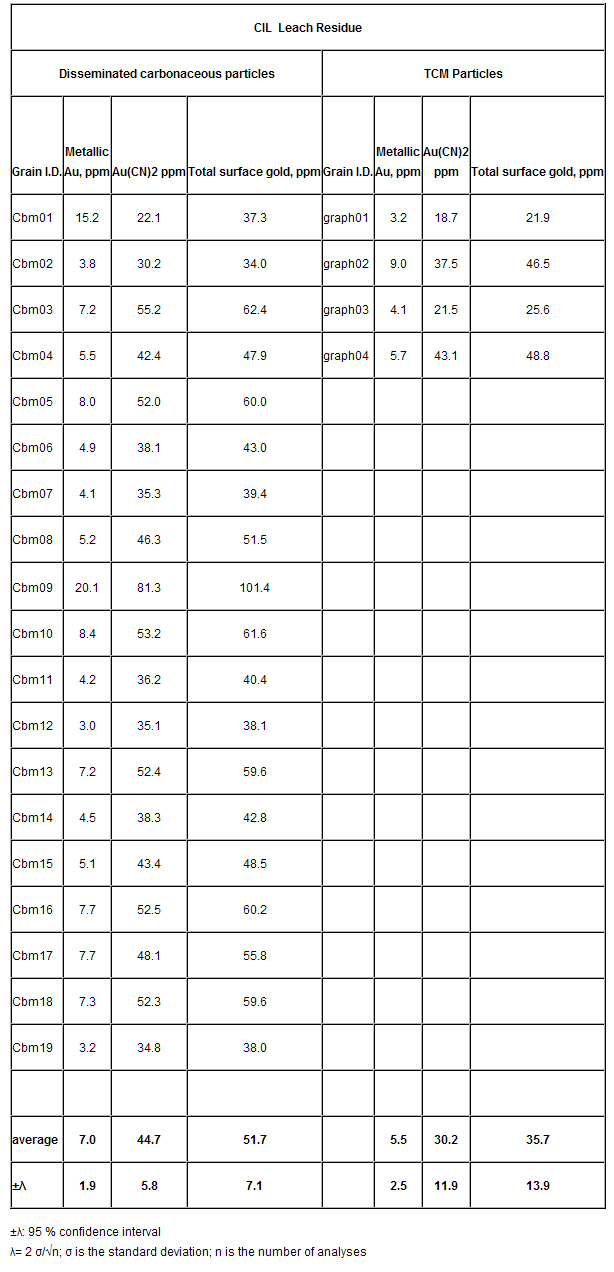Request for analysis:
A refractory sulphide ore containing carbonaceous matter has been processed in an AC POX/CIL test plant. The gold recovery after cyanidation leaching is low. The CIL residue was analysed for possible losses due to preg-robbing of gold from the cyanide solution onto carbonaceous material present in the sample.
Objectives:
Methodology:
Results of the study:
Separate carbonaceous particles from the CIL residue sample were selected under the optical stereoscope and mounted on a copper substrate for analysis.
Major findings:
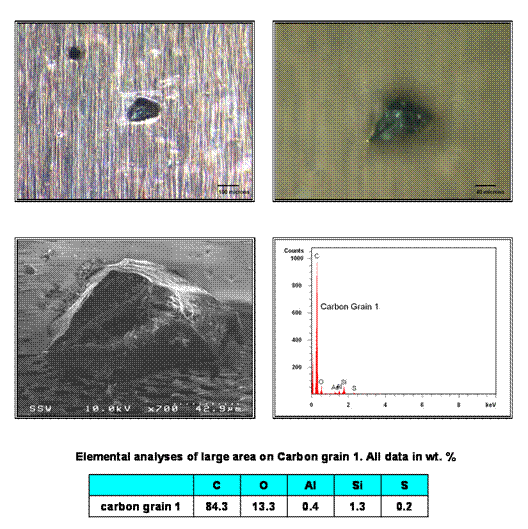
Figure 1. Optical microscope and SEM images along with EDX spectra and semi-quantitative elemental analyses of total carbonaceous matter (TCM) grain.
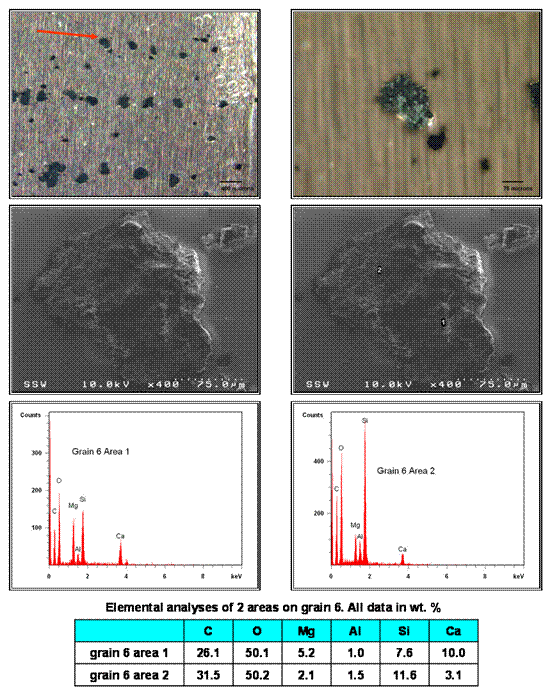
Figure 2. Optical microscope and SEM images along with EDX spectra and semi-quantitative elemental analyses of two areas on a grain with disseminated carbonaceous matter. The arrow indicates the grain analyses in the context image.
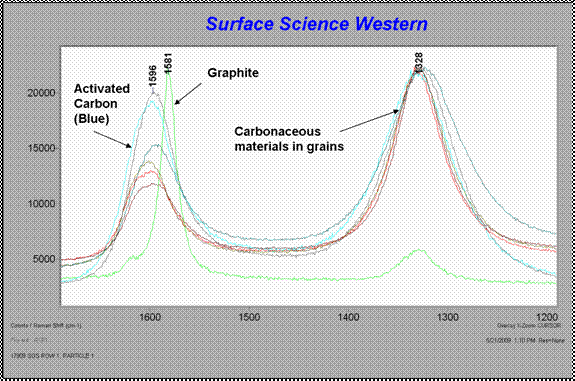
Figure 3. Overlain Raman spectra from carbonaceous areas in several carbonaceous particles along with reference graphite and activated carbon spectra
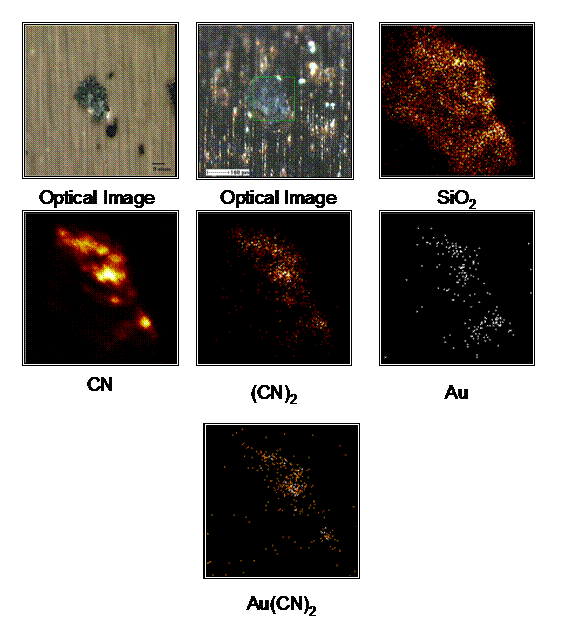
Figure 4. Optical microscope images and ToF-SIMS elemental and compositional maps for a selected carbonaceous particle. The quantified amount of metallic gold on this particle was 4.5ppm, while the amount of Au as Au(CN)2 compound gold was 38.1ppm.
Table 1 – Measured concentrations of surface gold on C-matter from CIL tails
